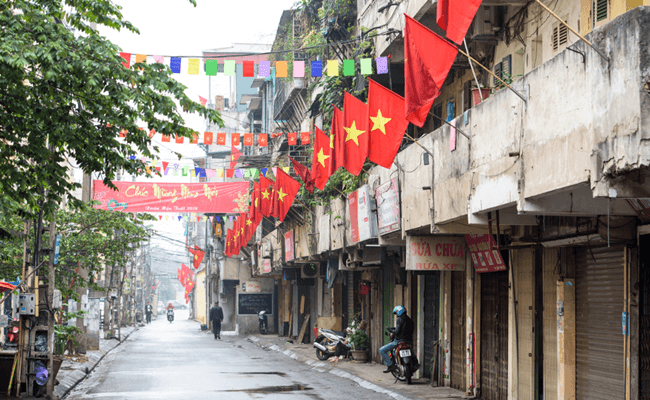The Bach Dang Stake is located in the marshy zone of Yen Giang Commune, Yen Hung District, Quang Ninh Province, that borders the Chanh River. The stake-yard is the site where Tran Hung Dao, a national hero of the 13th century, is forever honoured.
It was officially recognized as one of Vietnam’s historic vestiges on March 22, 1988; the 700th anniversary of a great victory at Bach Dang against Mongol invaders.
When the local people built a dyke in 1953, they discovered the Bach Dang stake-yard. There remain hundreds of stakes arranged in the zigzag-shaped (shape of the letter Z). Some are vertical; some others are inclined 15o to the east. Most of the stakes are made of ironwood. They were bevelled in one end, and their heads were broken. Their average length ranges from 2 to 2.8m, even up to 3.2m. The bevelled part is 0.8 to 1m. The stakes lie 0.5-1.5m under ground. The whole 220m2 stake ground is now protected by dyke. Of the stakes, 42 remain intact 2m under a layer of mud and jut out 0.2-2m. The density of stakes in the southern part of the ground is 1 stake over 0.9-1m2; meanwhile that of the northern part is 1 stake over 1.5-2m2. Just 3km away from the town centre, the Tran Hung Dao Temple lies at a strip of land stretching to the middle of the river in Yen Giang Commune. Legend has it that when Tran Hung Dao came to Trung Ban mound to investigate the topography of the locality to prepare for the Bach Dang battle, his hair knot got loose. He stopped, pushing his sword in the ground, to twist his hair into a chignon. The local fishermen saw this and built a temple dedicated to him right in this place.
In 1288, after two unsuccessful military offensives (1258 and 1285), 300,000 Mongol invaders led by Thoat Hoan and force of 7,000,000kg rice food led by Truong Van Ho went to Thang Long by road and water way. The ruling Tran Court organized a plan of strategic withdrawal, and established guerrilla warfare to wear down their enemy. The invading forces dwindled, tried by both the climate and the constant attacks and were forced to withdraw. Tran Hung Dao had his men plant steel-tipped wooden stakes in the bed of the Bach Dang River to create a line of defence blocking the Mongol retreat.
On 9th April 1288 as the fleet entered the mouth of the river, a few small boats engaged the enemy. The tide ebbed, and the fleet was thrown on to the wooden stakes, while Tran Hung Dao’s army moved in for the kill. The 300,000 men were either killed or taken prisoner, and 400 enemy warships were destroyed.
The Bach Dang Victory in 1288 was a glorious victory, which marked in the Vietnamese history against the invaders, and the Stake – Yard in Yen Giang Lagoon was an evidence of the glorious feat of arms.






